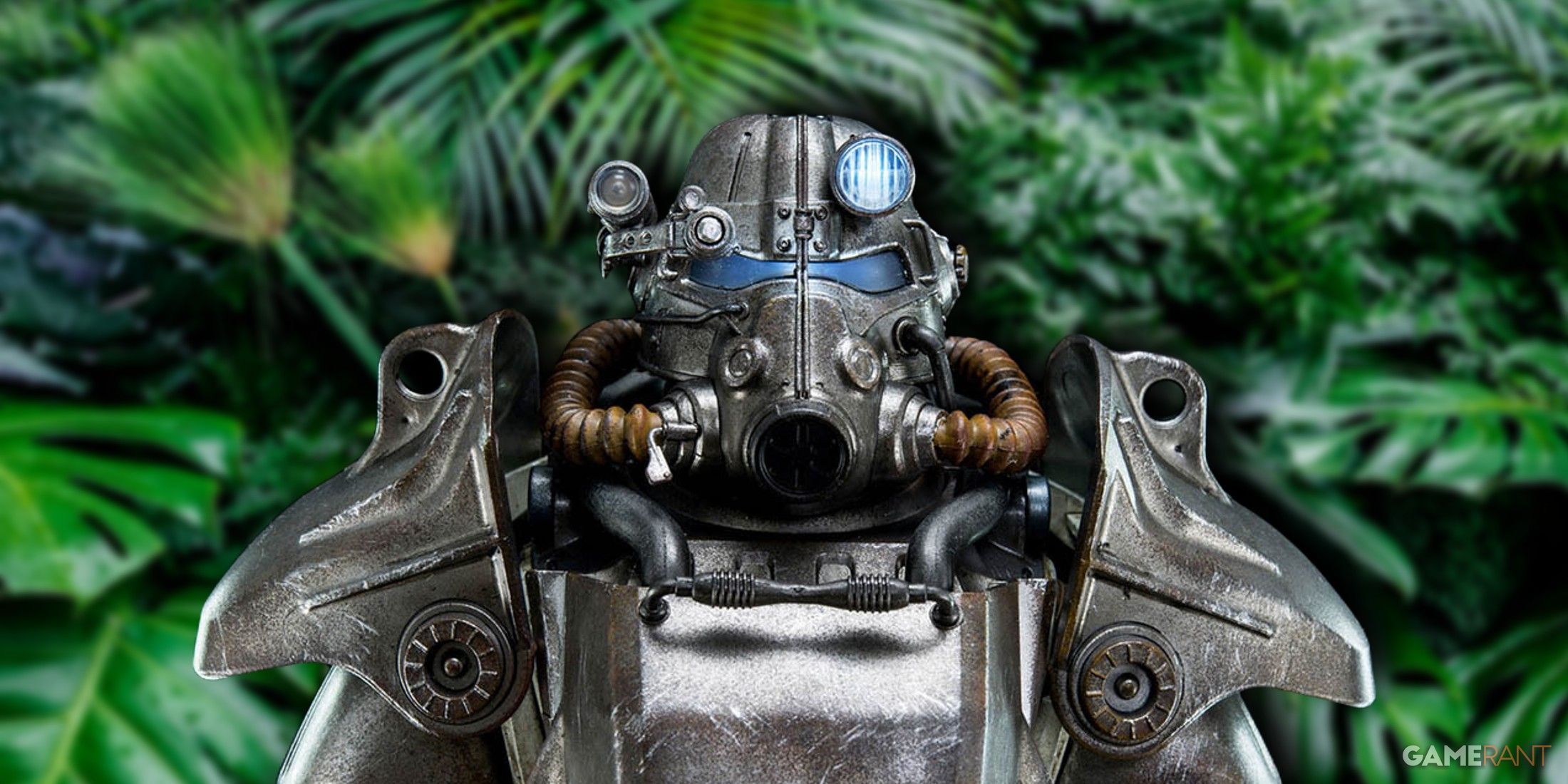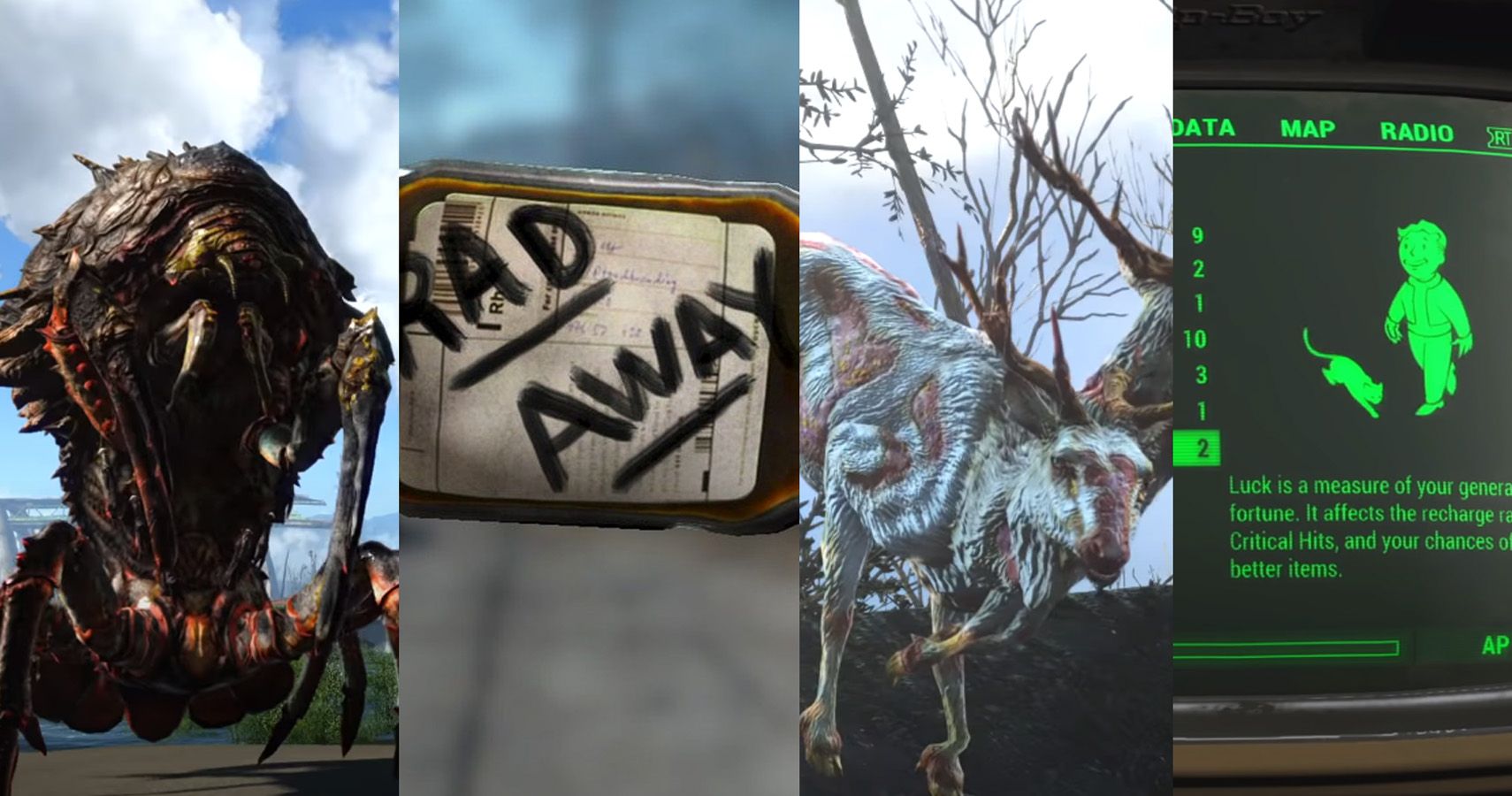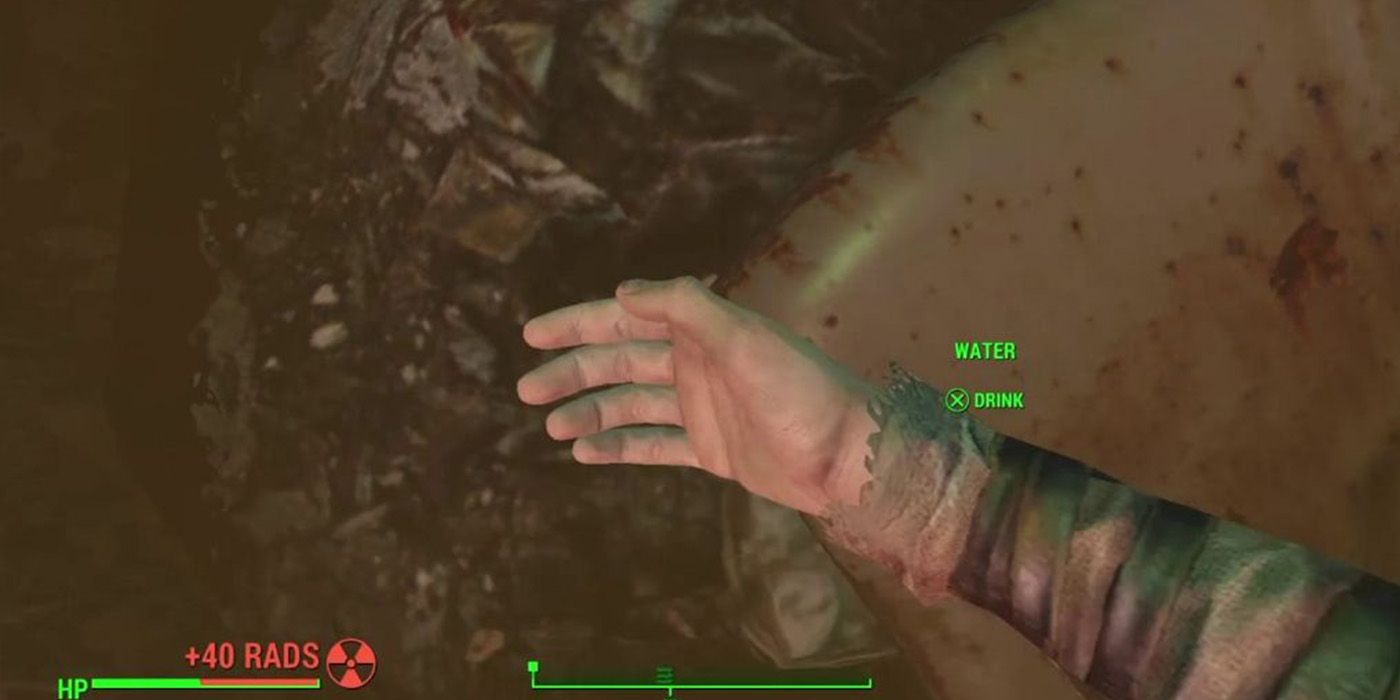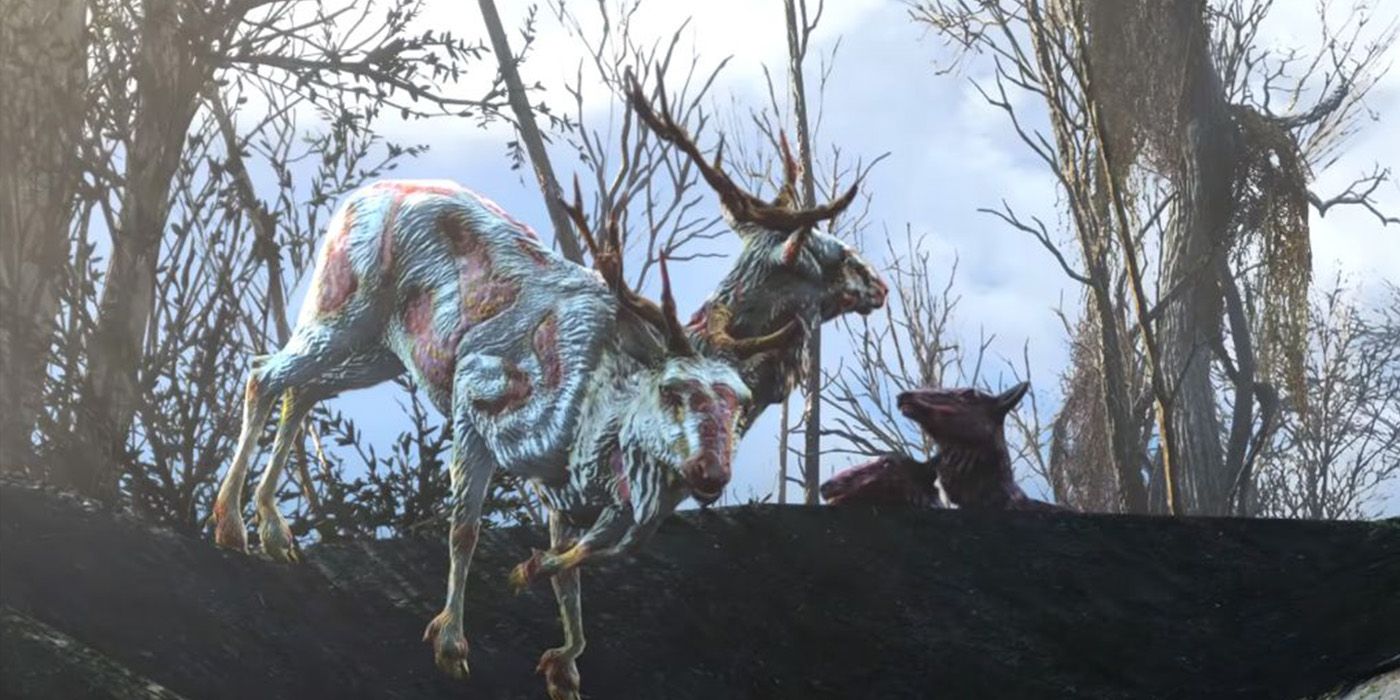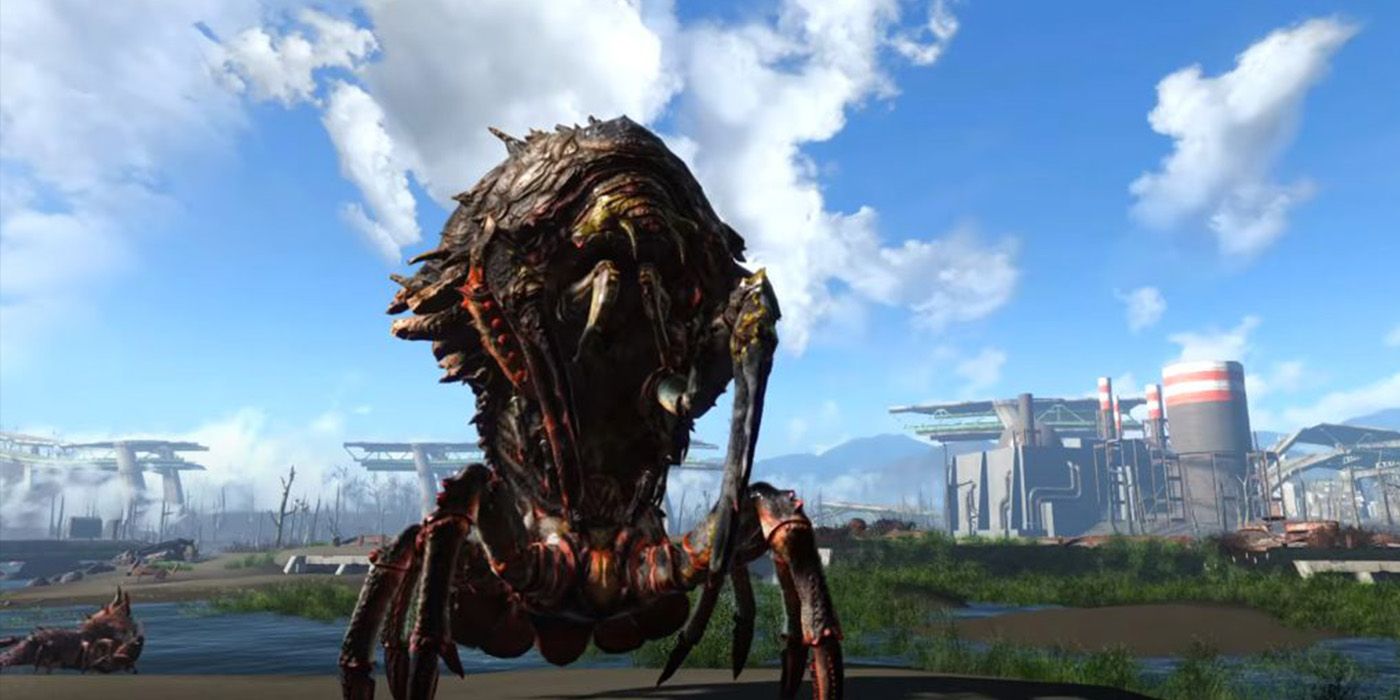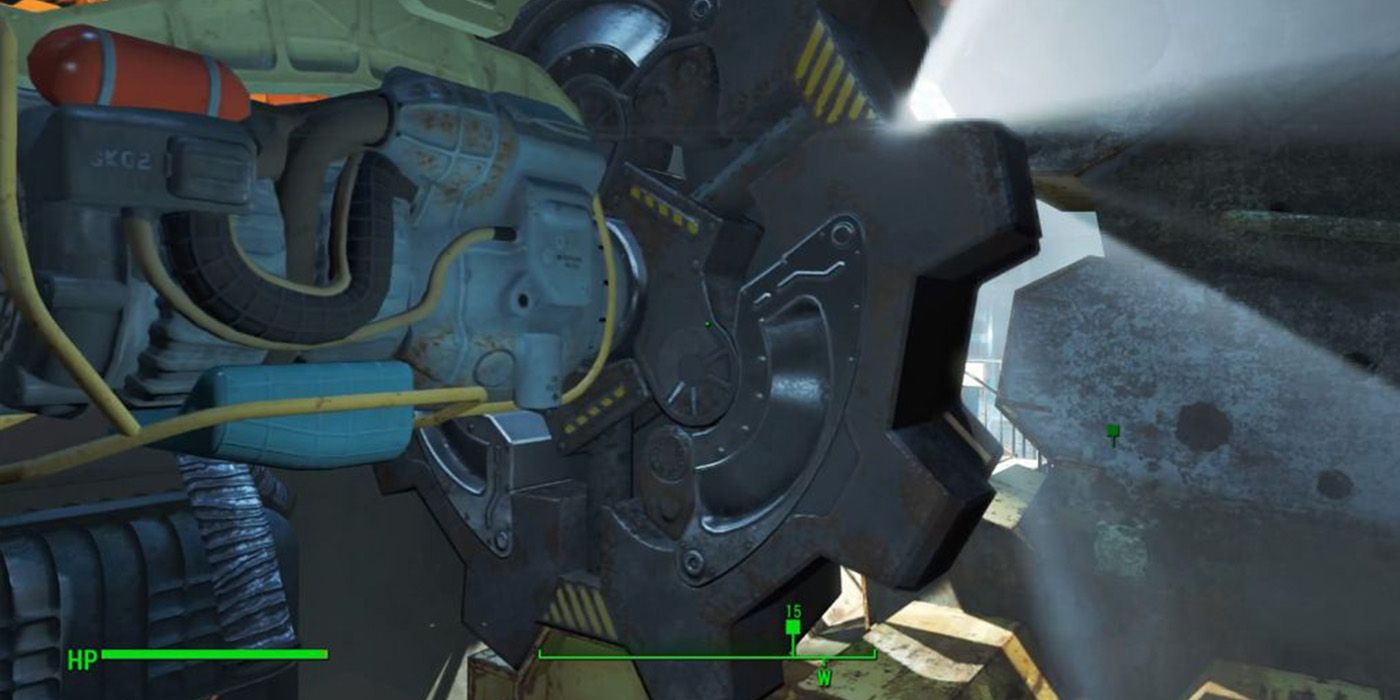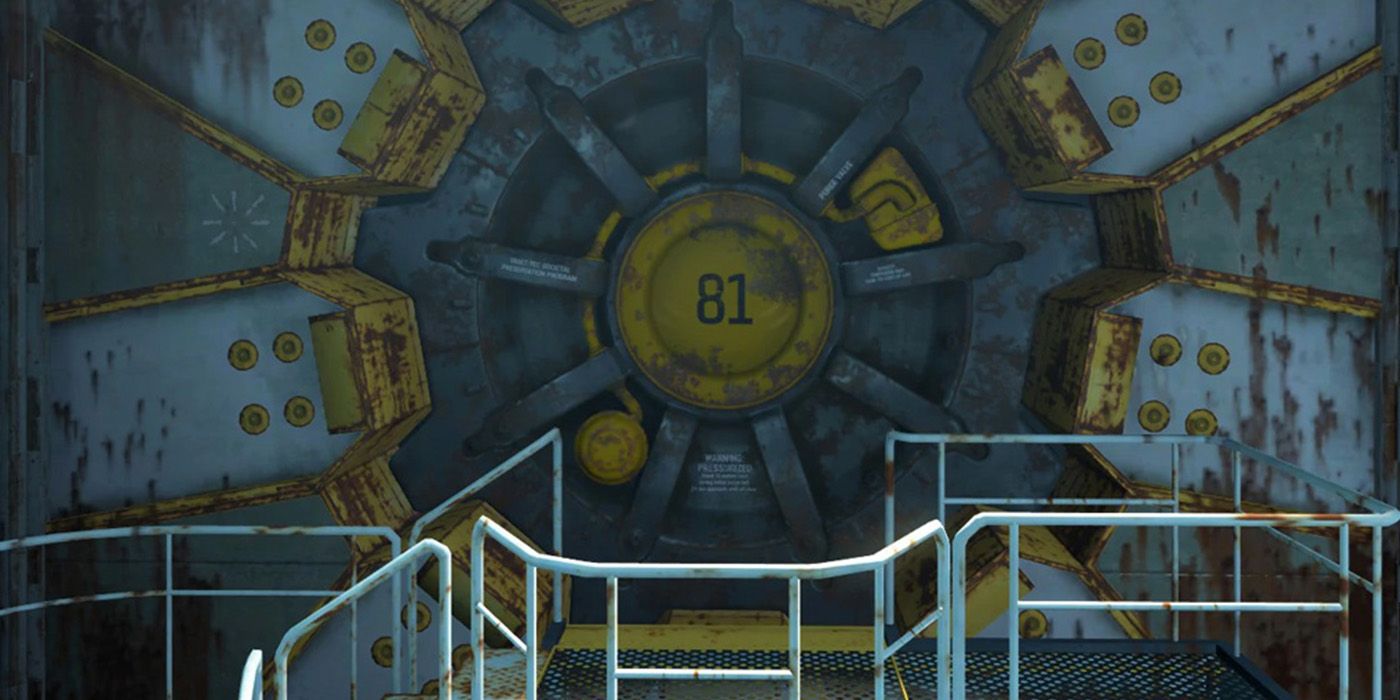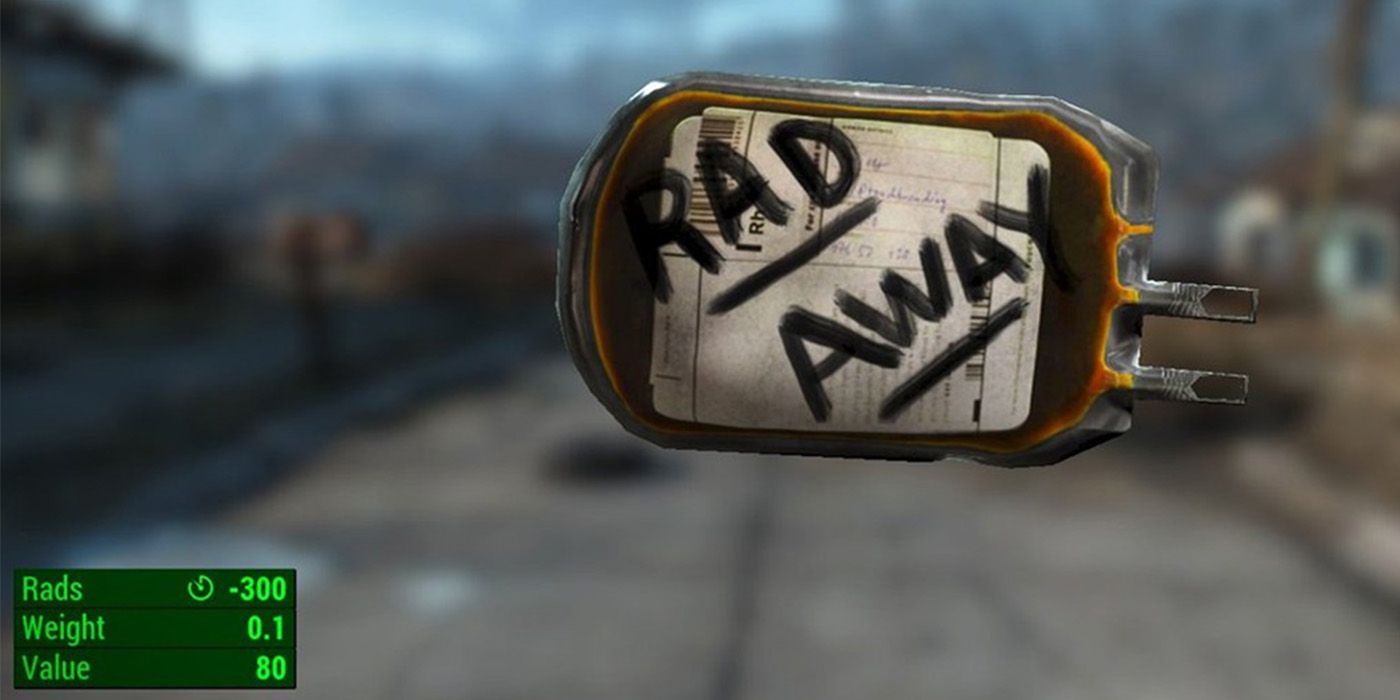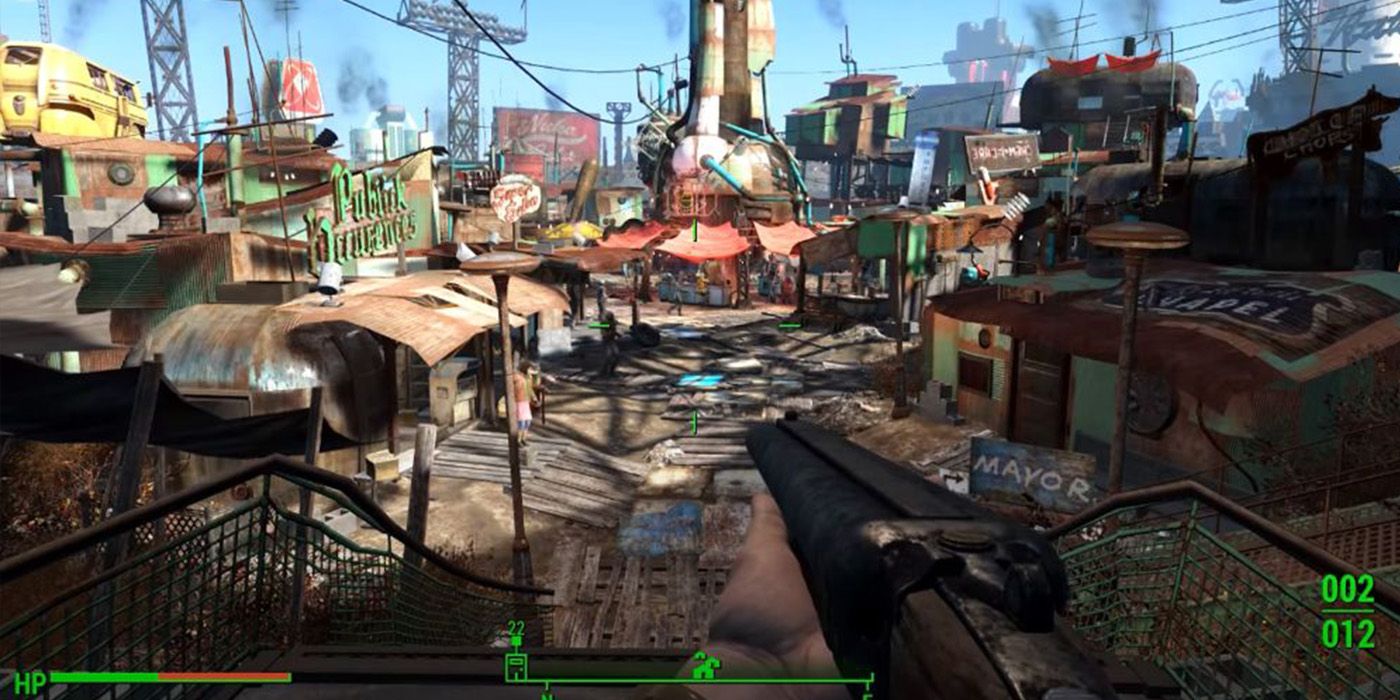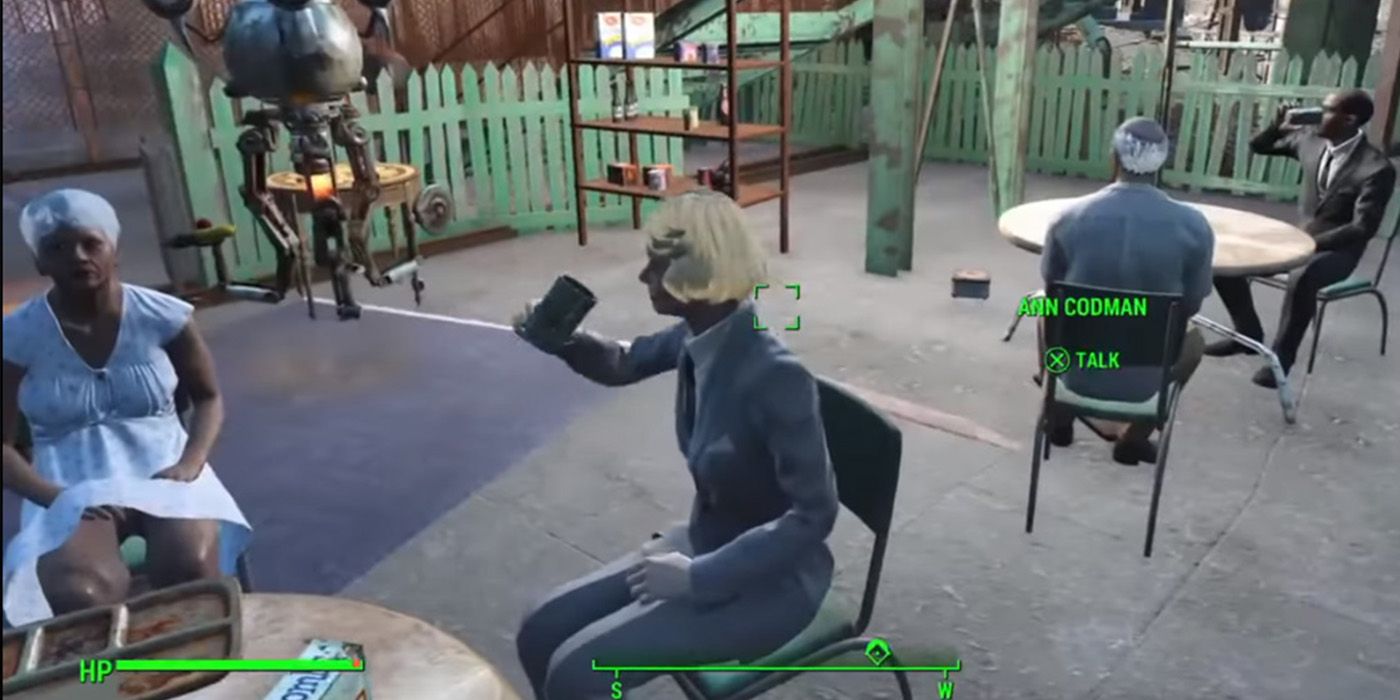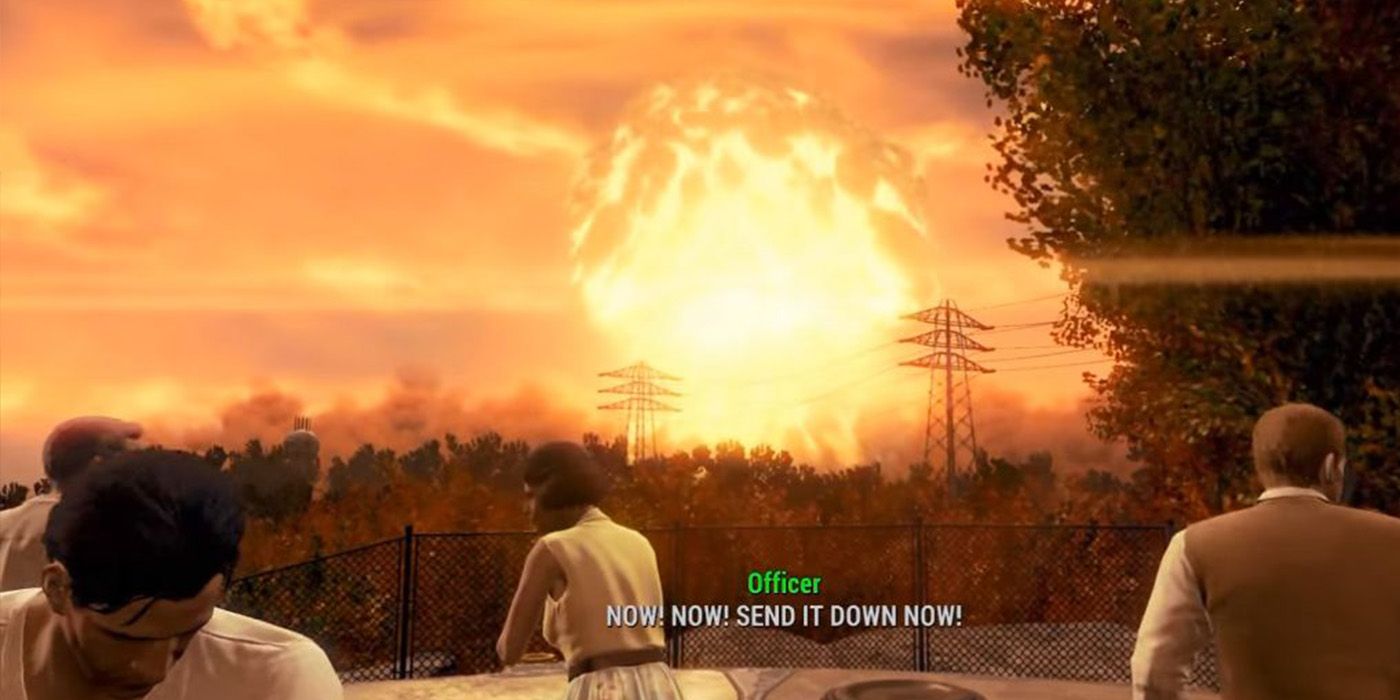Gamers love the Fallout franchise thanks to its remarkable portrayal of a post-apocalyptic setting. Thanks to its in-depth lore, an attachment to a 1950s dieselpunk aesthetic, and quirky features, Fallout has since remained as Bethesda Softworks' most iconic titles. Anyone who wants a change of pace from BethSoft's fantastical The Elder Scrolls series can count on Fallout 4 to deliver a more "modern" experience. That is until gamers put a magnifying glass on Fallout's take on radiation.
Fallout fans admire the game's rather in-depth take on the apocalypse that transformed Fallout's alternate reality in the first place. The game shows an imaginative take on its version of a world reliant on nuclear technology. However, it turns out that Fallout's take on radiation isn't as accurate as it seems.
10 Radiation should come in many forms
Radiation is central to Fallout lore as it forms most of its world's foundation. And given the Great War that devastated the planet, radiation became a central part of the game's narrative. Unfortunately, the game doesn't share much about the actual properties of radiation in-game.
In real life, radiation comes from objects that can emit energy. It's thanks to certain radioactive intersections with objects such as microwaves that people can cook leftover pizza. Radiation only gets deadly if too much of it hits an object that charges (ionizes) its electrons. When substances become radioactive, they can emit three kinds of radiation: alpha (dangerous when swallowed or inhaled), beta (damages DNA), and gamma (penetrates most materials).
9 More animals should be back to normal
In the Fallout timeline, much of the plant-life and wildlife around the world disappeared after the Great War. They're not safe to eat, either. And if these animals were indeed edible, they're probably heavily-protected given their rarity.
In the real world, the absence of animals after a nuclear fallout would likely happen only for a short while. With enough absence of human intervention, we may be able to see animals make a comeback even after a fallout. Observations inside Chernobyl from 2008 to 2010 revealed the presence of wolves and other animals that didn't seem to observe adverse radioactive mutations. Since wolves are natural predators in the wild, their existence in Chernobyl likely indicates the presence of other animals.
8 Mutations shouldn't be that extreme
What's an RPG without its set of baddies? Fallout makes this possible by opening the possibility of life on Earth getting intense mutations after being exposed to nuclear radiation. After the Great War, animals transformed into monstrosities, and humans became zombie-like "ghouls."
In the case of a real-world nuclear fallout, mutations can indeed occur. However, these mutations aren't going to transform its victims into superhuman monsters. Instead, mutations from radiation affect molecular structures on a subtler level. Mutated animals observed from nuclear environments such as Chernobyl exhibit features such as tumors, or underdeveloped organs.
7 Vaults should be very sturdy to be that close to ground zero
In the franchise, Vault-Tec built the game's iconic Vaults to house pockets of humanity and protect them from any form of nuclear disaster. Ideally, the Vaults should be able to accommodate them for a couple of hundred years with enough supplies to sustain them.
In the real world, Vault-Tec will have to be lucky for its Vaults to house humans. As per some analysis, fallout shelters work better if they're significantly underground. Moreover, bunkers should withstand at least 50 pounds of pressure from the blast. These shelters work best the further away they are from the blast zone. Bunkers above ground won't benefit from the extra protection the soil offers, and bunkers without enough defense will likely get squished.
6 Vaults should've been active for just a short while
In Fallout, some areas in the world remain heavily irradiated even two centuries after the Great War. This caveat can prove fatal for players, as radiation exposure can lessen their overall health levels. How long should they have stayed inside, though?
Turns out, only for a couple of years, hundreds. Vaults work best if they're underground and well-fortified against pressure. Studies also estimate that most lethal radiation would only linger in areas for up to half a decade. This detail means radiation in the air won't necessarily last hundreds of years after a nuclear fallout. At least, this is based on what scientists know so far.
5 Radiation effects should get a more accurate portrayal
Players in Fallout experience radiation in a very technical fashion. In the game, being exposed to radiation lessens the overall health of the player. Some games in the series even lower player stats the more irradiated their characters become. Unfortunately, just seeing "less max health" or being a ghoul doesn't accurately portray radiation poisoning.
In real life, radiation exposure causes what's called acute radiation syndrome. Having this condition causes dangerous side-effects depending on the duration and intensity of the radiation exposure. For instance, having this condition may cause different kinds of cancer, cause tumor growth and hair loss, trigger vomiting, and kill a person outright.
4 Radiation treatment shouldn't be easy
When players experience high RAD exposure, it's nothing a good Rad-X pill or RadAway shot can heal, right? The Fallout series makes use of these medications to "lower" RAD levels. Interestingly, they have real-world "analogs." Rad-X may be real-life potassium iodide pills that can stabilize radioactive iodide present in nuclear accidents. Meanwhile, RadAway shows similarities to chelation therapy that eliminates heavy metals in the bloodstream.
However, similarities end with these analogs. In the real world, different kinds of nuclear emergencies exist that demand different types of treatments from professionals. Unlike in Fallout, numerous methods can cure radiation depending on several factors. Moreover, merely consuming Rad-X and RadAway in real life could prove fatal without proper guidance.
3 Factions should have had a hard time forming
A huge selling point of the Fallout series is its post-apocalyptic setting. Aside from mutated monsters and humans, pockets of civilization outside the Vaults have persisted and made their own "small" societies. In Fallout 4, these factions influence many aspects of a person's way of life in the post-apocalyptic game. What the series didn't emphasize is what a challenge establishing these factions would be in the first place.
The fact that there seems to be an "abundance" of food and medicine in the game didn't help Fallout show the difficulty of post-war Earth to reform. In simulations, a "small-scale" nuclear war between India and Pakistan could potentially have 2-billion suffer famine. And considering the scale of Fallout's Great War, irradiation can contaminate most of the world's food supply.
2 NPCs shouldn't have been abundant in the games
In Fallout, a lot of people still "got lucky" despite the Great War's impact on a global level. These humans got to establish settlements or persisted despite the irradiated environment. In the real world, nuclear disasters won't leave room for "lucky" humans.
A simulation of a small-scale nuclear conflict between the United States versus Russia could eject so much material in the atmosphere that could block sunlight for decades. This nuclear winter can decrease global temperatures by at least -8° Celsius. Such an event can cripple food shortages due to the adverse effects of this climate change on livestock and plants. So unless humans got to stay in secure Vaults, there wouldn't be anyone left to live Fallout's story.
1 Nuclear winter should've happened
Interestingly, there's no mention of any nuclear winter after the Great War in the games. However, fans "justify" this given the setting. Since the Fallout universe never got to invent transistors early on in humanity's history, their tech depended on nuclear energy, oil, and natural gas. This tidbit explains why the game sports a 1950's diesel-punk aesthetic. The theory also suggests this divergence made it impossible for Fallout's universe to have a nuclear winter.
Firestorms, created after the explosion, can shoot enough material to the atmosphere to create nuclear winter. Firestorms form when flammable objects create small flames, which hurricane-like winds (like that from a blast) amplify. The "lack" of such advanced materials in the Fallout universe tries to justify the absence of nuclear winter in the game's story, but it's still too big a detail to ignore.

